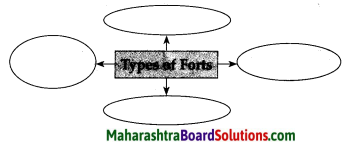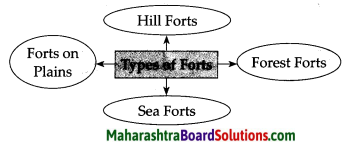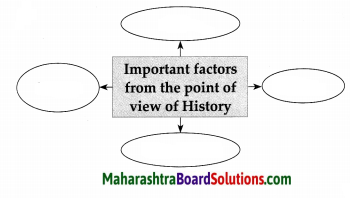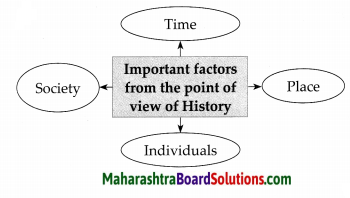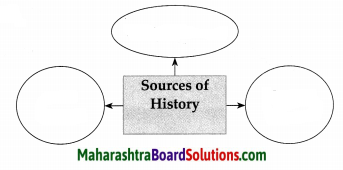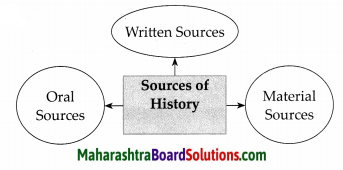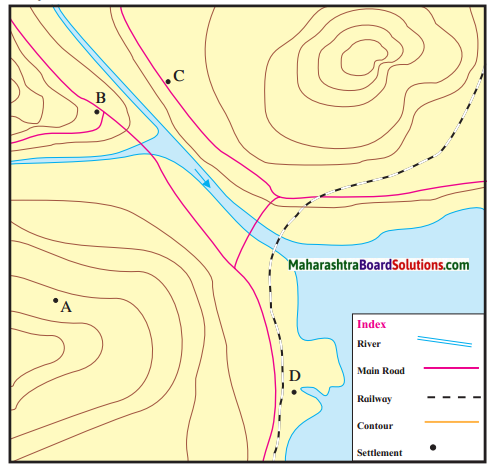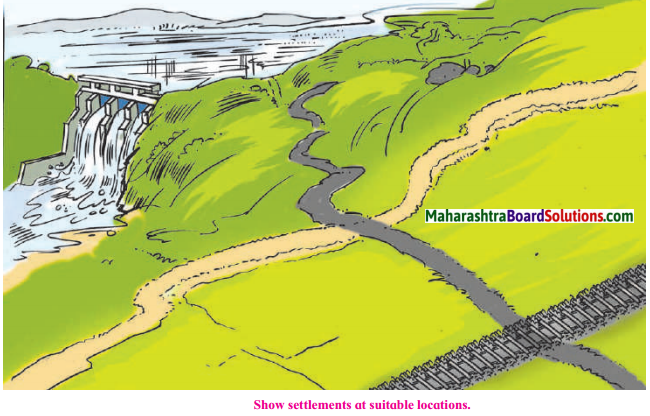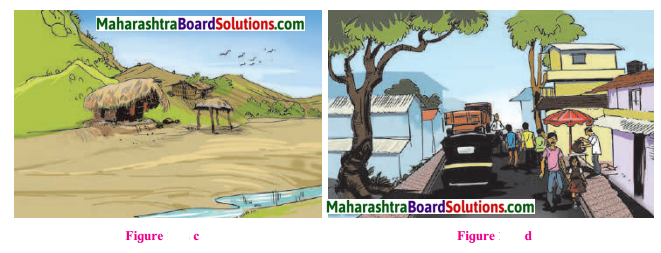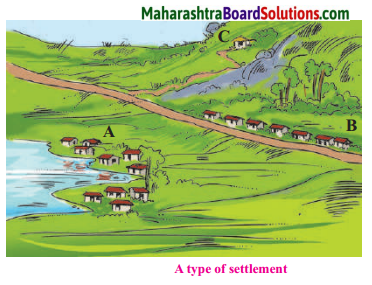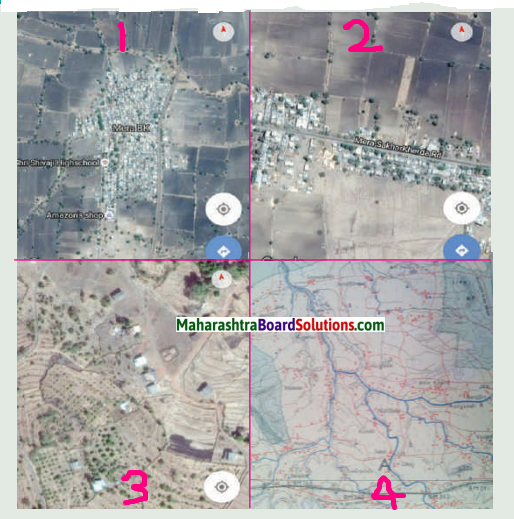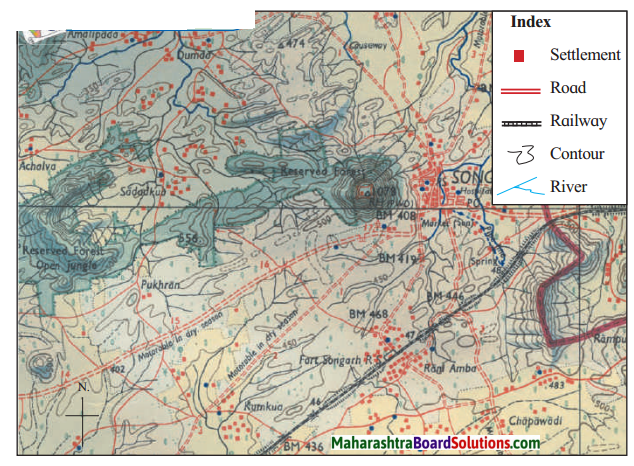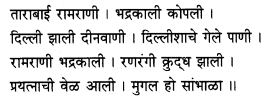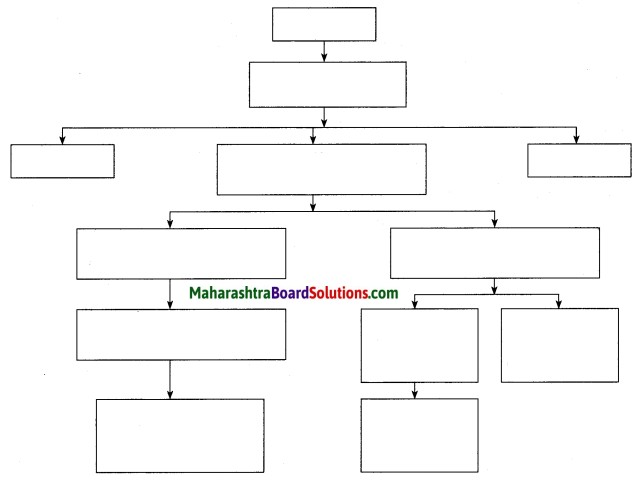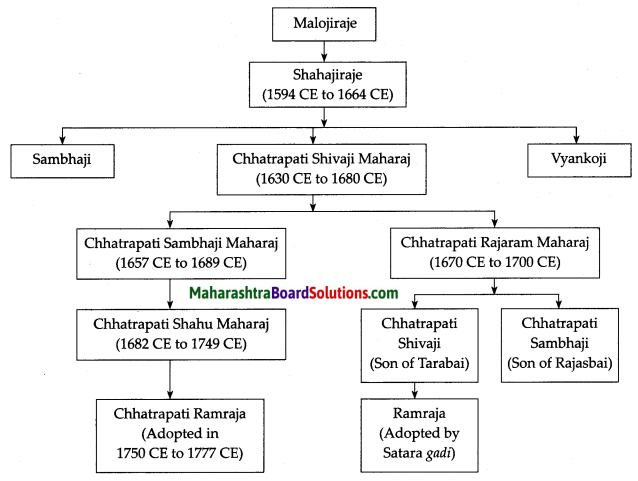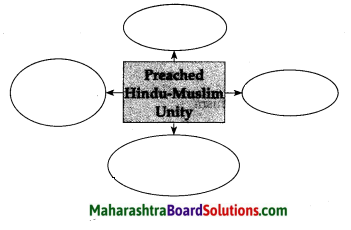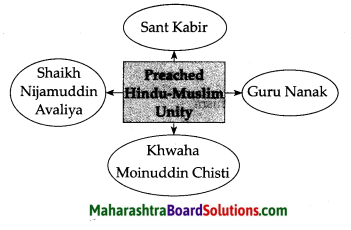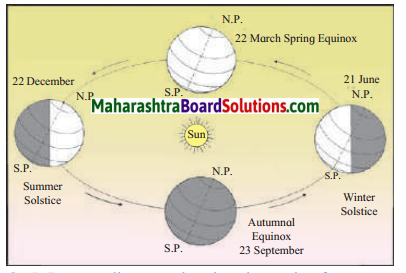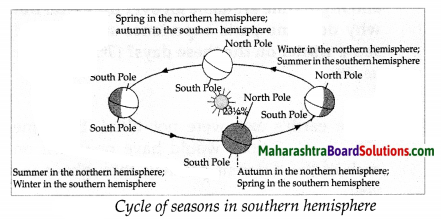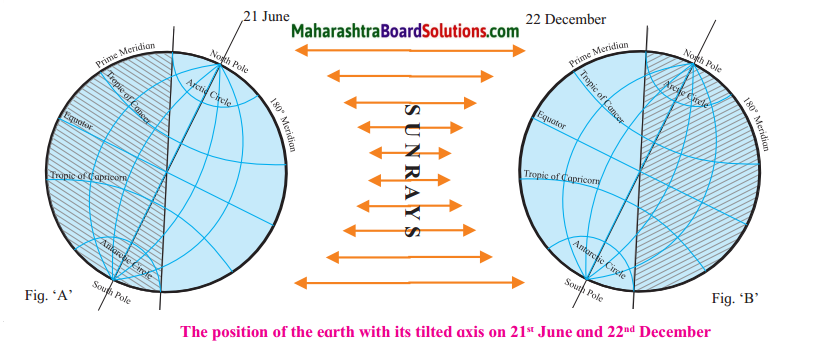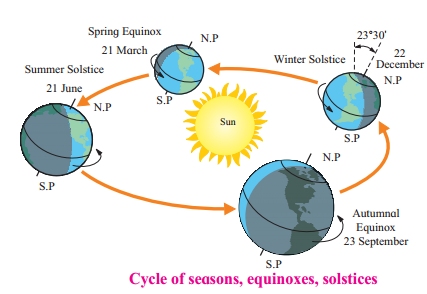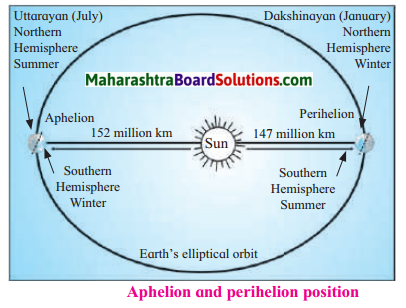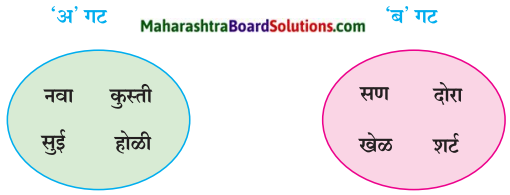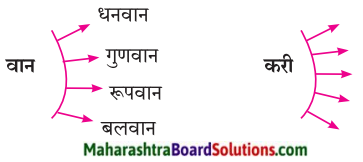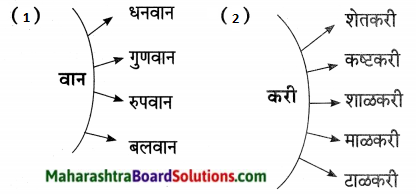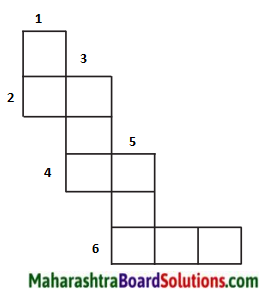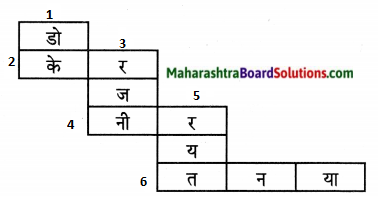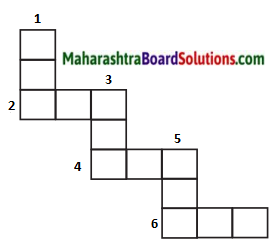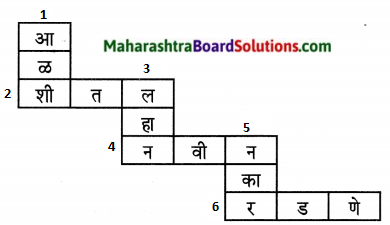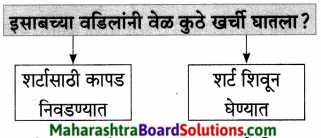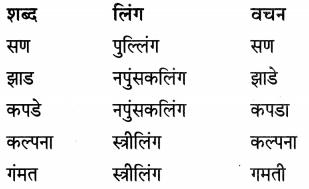Balbharti Maharashtra State Board Class 7 History Solutions Chapter 7 The Administration of the Swaraj Notes, Textbook Exercise Important Questions and Answers.
Maharashtra State Board Class 7 History Solutions Chapter 7 The Administration of the Swaraj
Class 7 History Chapter 7 The Administration of the Swaraj Textbook Questions and Answers
1. Can you tell ?
Class 7 History Chapter 7 The Administration Of The Swaraj Question 1.
A Council with eight departments –
Answer:
Ashtapradhan Mandal
The Administration Of The Swaraj Std 7 Question Answer Question 2.
Bahirj Naik was the Head of this department –
Answer:
Intelligence department.
![]()
The Administration Of The Swaraj Std 7 Question 3.
The sea fort built by Maharaj near Malvan –
Answer:
Sindhudurga
7 The Administration Of The Swaraj Question Answer Question 4.
He looked after the war materials on the fort –
Answer:
The Karkhanis.
2. Write about it in your own words:
The Administration Of The Swaraj Question 1.
Shivaji Maharaj’s Policy regarding agriculture.
Answer:
- Agriculture was the backbone of the village/ rural economy
- Shivaji Maharaj paid attention to the welfare of the peasants.
- The officers were warned not to collect more revenue than the fixed amount.
- Peasants were encouraged to bring more land under cultivation.
- Special concession was granted if: There was famine, floods or if any army of the enemy had devasted the area.
- Bullocks, ploughs and good seeds were provided to the peasants.
![]()
Question 2.
Shivaji Maharaj – a ruler concerned about the welfare of his subjects.
Answer:
(i) Shivaji Maharaj had an excellent agricultural policy like fixed revenue. He paid attention to the welfare of the peasants.
(ii) Concessions to the farmers who had crop failure due to floods, famine, etc.
(iii) He provided bullocks, ploughs and good seeds to the farmers.
(iv) He increased trade so that kingdom could prosper.
(v) He protected industries, e.g. The salt industry in the Konkan.
(vi) Salt imported from the Portuguese territory would then cost more so he protected the salt industry in Konkan. Hence the above stories reveal that Shivaji Maharaj was concerned about the welfare of his subjects.
3. Give reasons:
Question 1.
Shivaji Maharaj appointed a Council of Eight Ministers.
Answer:
- Shivaji Maharaj divided the administration in to eight different departments.
- For the convenience of the administration, Shivaji Maharaj appointed a Council of Eight Ministers called ‘Ashtapradhan Mandal’.
Question 2.
Shivaji Maharaj raised a navy.
Answer:
- The enemies on the west coast of India created obstacles in the work of expansion of the Swaraj.
- It was necessary to curb their activities and to protect the west coast.
- Shivaji Maharaj also realized that the one who has a navy, controls the sea. Hence, Shivaji Maharaj raised a navy.
![]()
4. Complete the chart:
Question 1.
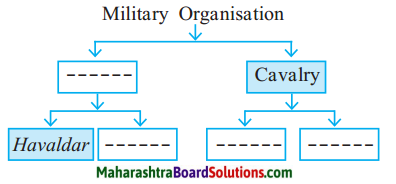
Answer:
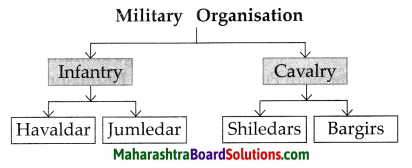
Activities:
- Interview a person in your neighbourhood who has served in the armed forces.
- Visit a market in your town. List the items prepared/grown in the neighbourhood and those that come from outside.
Class 7 History Chapter 7 The Administration of the Swaraj Additional Important Questions and Answers
Complete the sentence by choosing the appropriate words from the options given below:
Question 1.
Shivaji Maharaj entrusted the responsibility of organizing the land revenue system to _____ .(Bahuji Naik, Netaji Palkar, Annaji Datto)
Answer:
Annaji Datto
Question 2.
_________ was the highest officer in the cavalry. (Sarnobat, Havaldar, Naik)
Answer:
Sarnobat
Question 3.
One of the excellent sea forts was ________ (Sindhudurga, Padmadurga, Rajgad)
Answer:
Sindhudurga
Question 4.
______ looked after the storage of food grains and maintenance of war material on the fort. (Killedar, Karkhanis, Sabnis)
Answer:
Karkhanis
![]()
Question 5.
______ was the backbone of rural economy. (Navy, Agriculture, Army)
Answer:
Agriculture
Question 6.
Shivaji Maharaj appointed a _______ Council of Ministers. (four, eight, seven)
Answer:
Eight
Question 7.
Shivaji Maharaj knew the importance of __________ (trade, agriculture, industries)
Answer:
agriculture
Name the following:
Question 1.
He is the chief of the infantry.
Answer:
Sarnobat
Question 2.
Officers of infantry.
Answer:
(a) Havaldar
(b) Jumledar
Question 3.
Two type of cavalrymen.
Answer:
(a) Shiledars
(b) Bargirs
Question 4.
Number of forts in Swaraj.
Answer:
300 Forts
![]()
Question 5.
Number of ships of various kind in Navy.
Answer:
400 ships
Answer the following questions in one or two sentences:
Question 1.
Which officers were there on the forts?
Answer:
There was a Killedar, Sabnis and a Karkhanis on every fort.
Question 2.
Which were the hill forts built by Shivaji Maharaj?
Answer:
(i) Pratapgad
(ii) Pavangad
(iii) Rajgad
Question 3.
Name the battleships in the Navy of Shivaji Maharaj.
Answer:
(i) Gurab
(ii) Galbat
(iii) Pal
Question 4.
What were the two types of cavalrymen?
Answer:
(i) The Shiledar with his own horse and weapons
(ii) The Bargirs who were provided with a horse and weapons by the state.
Question 5.
Who were the Chief Naval Commanders?
Answer:
Maynak Bhandari and Daulatkhan were the Chief Naval Commanders.
![]()
Question 6.
Name the enemies on the west coast, who created obstacles in the expansion of Swaraj.
Answer:
- The Portuguese of Goa
- The Siddi of Janjira
- The British factors of Surat
- The Rajapur.
Question 7.
What constituted the ‘Ashtapradhan Mandal’?
Answer:
Shivaji Maharaj appointed a council of eight ministers handling the affairs of eight different departments. These eight heads of department constituted the Ashtapradhan Mandal.
Question 8.
How did Shivaji Maharaj appoint the council of ministers?
Answer:
Shivaji Maharaj appointed the council on the basis of their merits and achievements, and they were paid handsome salaries.
Question 9.
How did Shivaji Maharaj describe the merchants?
Answer:
Shivaji Maharaj described the merchants as “Merchants are the ornaments of the kingdom and the glory of the king”.
Question 10.
Name some of the famous sarnobats (officers) of the cavalry.
Answer:
- Netaji Palkar
- Prataprao
- Gujar
- Hambirrao Mohite.
![]()
Give reasons:
Question 1.
Shivaji Maharaj encouraged trade.
Answer:
- Shivaji knew that a kingdom does not prosper if the trade does not increase.
- Necessary goods could be brought in the kingdom.
- Goods were available in plenty.
- Prosperity of trade increased the wealth.
Question 2.
Shivaji Maharaj protected the salt industry in Konkan.
Answer:
- At that time, traders imported salt from the Portuguese territory and sold in Swaraj.
- They paid heavy duty on the salt.
- That affected the local trade in Konkan areas. Hence Shivaji Maharaj protected the salt Industry in Konkan.
Question 3.
Forts were of great importance.
Answer:
- Possession of a fort made it possible to keep an eye on the surrounding area.
- In case of a foreign invasion, it was possible to protect the people by taking shelter in the fort.
- It was possible to stock the fort with food grains, war materials, ammunition and military garrison.
- Hence forts were of great importance.
![]()
Write about the following in your own words:
Question 1.
Bahirji Naik
Answer:
- Bahirji Naik was the head of the intelligence department.
- He was extremely skilled in his job.
- He collected accurate and detailed information about the subject.
Question 2.
Ashtapradhan Mandal of Shivaji Maharaj.
Answer:
| Name of the Minister | Designation | Work |
| 1. Moro Trimbak Pingle | Pradhan | Run the administration and make arrangement for the conquered territories. |
| 2. Ramchandra Nilkanth Muzumdar | Amatya | Keeping the accounts of the state. |
| 3. Annaji Datto | Sachiv | To prepare royal edicts. |
| 4. Dattaji Trimbak Waknis | Mantri | Correspondence |
| 5. Hambirrao Mohite | Senapati | Organisation of the Army and protecting the kingdom. |
| 6. Ramchandra Trimbak Dabir | Sumant | Foreign relation. |
| 7. Niraji Rawaji | Nyayadhish | Dispense justice. |
| 8. Moreshwar Panditrao | Panditrao | Look after religious matters. |
Lets Learn:
Obtain information about the Armed Forces of India
Question 1.
State the names of the three Armed forces.
Answer:
- The Indian Army
- The Indian Navy
- The Indian Air force
Question 2.
What is the designation of the head of each forces?
Answer:
- The Indian Army – General
- The Indian Navy – Admiral
- The Indian Air force – Air Chief Marshal
![]()
Question 3.
Who is the head of all the three forces?
Answer:
The President of India is the head of all the three forces.
